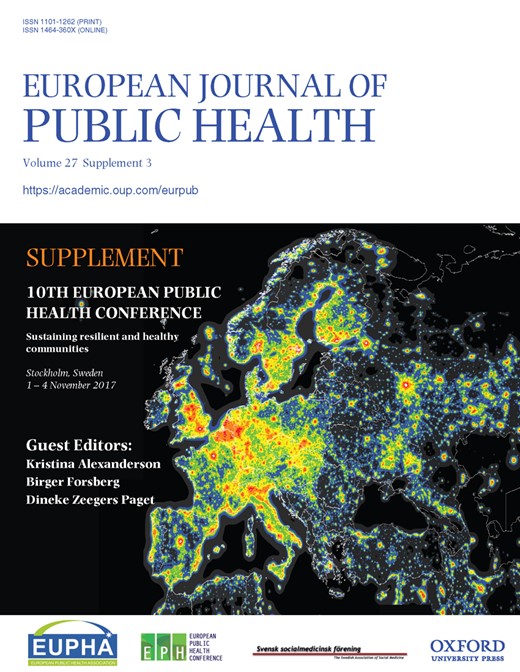-
PDF
- Split View
-
Views
-
Cite
Cite
J Lakerveld, E Hart, M McKee, JM Oppert, H Charreire, H Rutter, R Veenhoven, H Bardos, S Compernolle, I De Bourdeaudhuij, J Brug, JD Mackenbach, Contextual correlates of happiness in European adults - the SPOTLIGHT study: Joreintje Mackenbach, European Journal of Public Health, Volume 27, Issue suppl_3, November 2017, ckx187.451, https://doi.org/10.1093/eurpub/ckx187.451
Close - Share Icon Share
Background
There is evidence that neighbourhood environmental characteristics are associated with happiness, but no studies thus far have examined both the objectively assessed and perceived physical and social neighbourhood characteristics associated with happiness in European adults. We explored these associations and how they differed among subgroups.
Methods
Participants (N = 6037) residing in Belgium, France, Hungary, the Netherlands and the United Kingdom reported on their level of happiness using a 5-point Likert scale, and on perceived physical and social environmental neighbourhood characteristics. Objective physical environmental characteristics were assessed using a Google Street View-based neighbourhood audit. Associations of 14 aspects of the physical and social environment with happiness were analysed using multivariable multinomial regression analyses with clustered standard errors at the neighbourhood level.
Results
Living in neighbourhoods with higher levels of aesthetics and more water and green space was associated with being very happy. Individuals who perceived their neighbourhood to be safer, more functional and cleaner, with a larger social network, more social cohesion and who trusted their neighbours, were more likely to be very happy. In contrast, living in neighbourhoods with objectively assessed higher safety, functionality, and more destinations was associated with being less happy. Except for some evidence for interaction by employment status, educational level, gender and European region, the associations between environmental characteristics and happiness had similar directions and sizes across socio-economic and socio-demographic subgroups.
Conclusions
This European study provided evidence that both objectively assessed and perceived physical and social characteristics of the neighbourhood environment are associated with the happiness of its residents.
Key messages:
Several physical and social neighbourhood characteristics are associated with adults’ levels of happiness.
The associations were mostly similar across urban regions and socio-demographic subgroups.




Comments